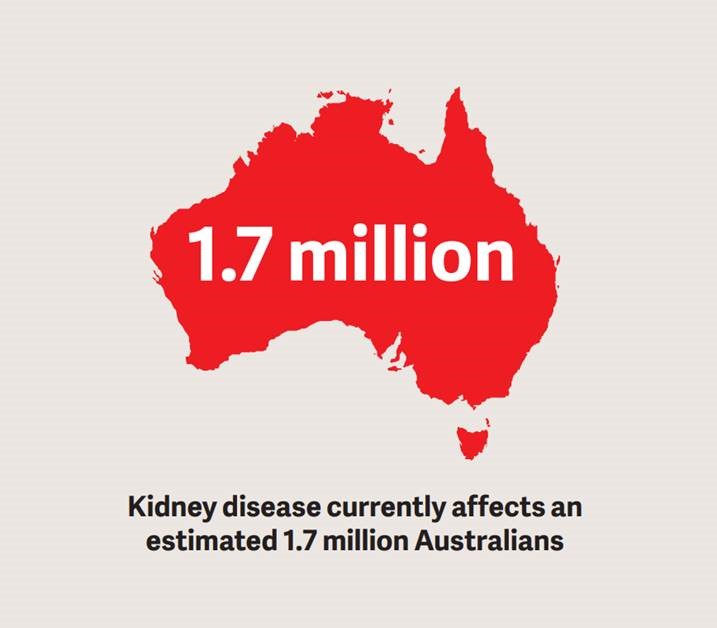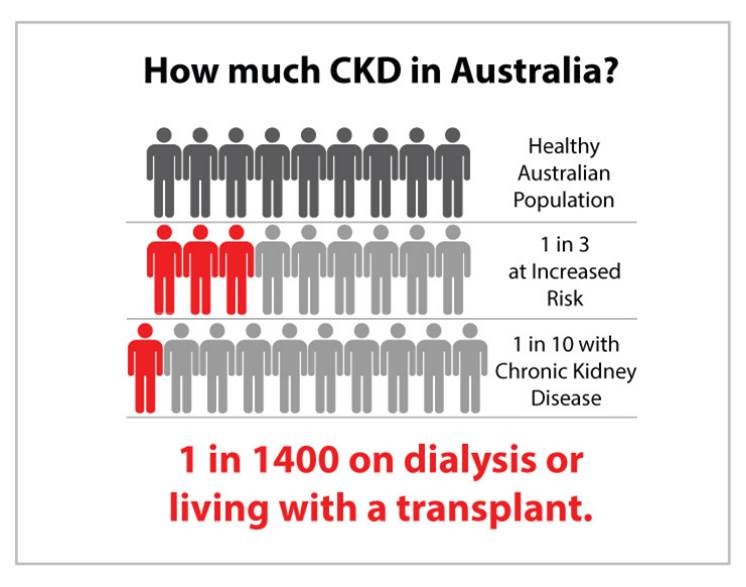Renal lifecycle study seeks a healthier future
General information
Background Information
Kidneys play a crucial role in our bodies. They purify waste products from the blood and excrete them through the urine. When the kidneys malfunction, there are far-reaching consequences. In chronic kidney damage, there is damage to kidney tissue. This can have several causes such as high blood pressure, diabetes or a congenital condition and is irreparable.
Chronic kidney damage is a major problem. According to figures from the Nierstichting (2021), 12% of the Dutch population has chronic kidney damage (this totals about 2 million Dutch people). Chronic kidney damage can lead to kidney failure, resulting in dialysis or transplantation. People with chronic kidney damage also have a high risk of developing cardiovascular disease. The more severe the kidney damage, the higher the risk.
In Australia the following numbers are being mentioned:
Chronic Kidney Disease (CKD) is frequently accompanied by cardiovascular disease and/or diabetes. In 2011-12, 51% of people with CKD also had cardiovascular disease (CVD) and/or diabetes (Figure 2)4. An estimated 4.9 million Australian adults (29%) had CVD, diabetes or CKD; 7% (1.2 million) had at least two of these conditions and 1% (182,000) had all three conditions.


Source: Kidney Health Australia, State of the Nation 2015 Kidney Health Week Chronic Kidney Disease Australia 2015
Available from: https://kidney.org.au/uploads/resources/state-of-the-nation-2015.pdf
SGLT-2 inhibitors
SGLT-2 stands for: Sodium GLucose Transporter Type 2, in Dutch sodium glucose transporter type 2. SGLT-2 inhibitors cause more glucose (sugar) and more sodium (salt) to be excreted by the kidneys. This makes the blood pressure get a little lower and the pressure in the kidney filters a little lower. This makes damage to the kidneys less likely to occur and existing damage less likely to get worse.
SGLT-2 inhibitors are drugs recommended for the treatment of diabetes, cardiovascular disease and kidney disease. Previous large studies have shown several positive effects of SGLT-2 inhibitors, including thus protection against the development of kidney and also heart failure. In addition, SGLT-2 inhibitors were well tolerated and proved safe. The investigational drug Dapagliflozin is one of these SGLT-2 inhibitors.
Research Objective
In the studies conducted so far, patients with poor kidney function (a renal function of less than 25 percent kidney function , dialysis patients and kidney transplant recipients) were not included. This is very unfortunate, as these patients in particular are at high risk of developing end-stage renal failure, heart failure and death. There is increasing evidence that SGLT2 inhibitors may also be effective in preventing renal failure, heart failure and death in patients with severe kidney disease, including dialysis and kidney transplant patients. Therefore, researchers now want to investigate whether and how SGLT2 inhibitors work on heart and kidney failure in patients with severe kidney disease, including dialysis and kidney transplant patients.
